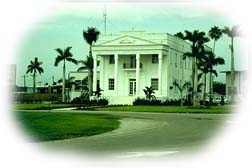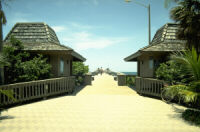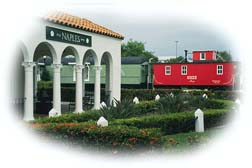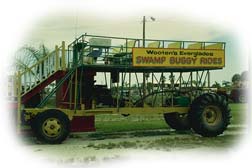Naples Florida History
 Home to the Calusa Indians
until the early 1700's, and then to the Seminoles in the
mid 19th century, and always to an incredible population
of wildlife, Southwest Florida is rich in human and natural
history. Our first European visitor was Spanish explorer,
Ponce de Leon, in the sixteenth century, and many famous figures
of history have followed since, including Teddy
Roosevelt. On May 8, 1923, Collier County was founded by
and named after entrepreneur Barron Gift Collier.
Home to the Calusa Indians
until the early 1700's, and then to the Seminoles in the
mid 19th century, and always to an incredible population
of wildlife, Southwest Florida is rich in human and natural
history. Our first European visitor was Spanish explorer,
Ponce de Leon, in the sixteenth century, and many famous figures
of history have followed since, including Teddy
Roosevelt. On May 8, 1923, Collier County was founded by
and named after entrepreneur Barron Gift Collier.

The first County Government was
located in Everglades City. It remained there until 1966, when
it was moved to Naples. The vision of some very
determined people, the advent of the railroad, and the
Tamiami Trail, hewn through swampland from Tampa to
Miami, set Naples on the path to becoming today one of
the fastest growing cities in the United States. A dredge
used to build the Trail can be seen at the Collier
Seminole State Park, located 17 miles southeast of
Naples.

On the way to Naples' historic
Pier is Palm Cottage, built in 1895 and reputedly Naples'
oldest house, where guided tours are offered in season. Other
historic buildings include the Naples Commissary Building
in Olde Naples, dating back to 1903, and the renovated Naples
Depot (1927), once the Naples Train Station and now
displaying a caboose and other railroad memorabilia. History
buffs will also find much of interest at the Collier
County Museum, which houses a permanent collection from
Prehistoric times through to the present day. You will
learn about the early Indian settlements here and may
wish to go on to visit an Indian Village in the area,
where genuine Indian, hand-crafted artifacts are sold.

Nature lovers will have a field
day in the Everglades or in any of the area's many parks
and wildlife preserves. The Everglades, which has been
called the "River of Grass," is the only ecosystem
of its kind in the world. Florida's state reptile, the
American alligator, thrives here, as do raccoons, black
bears, panthers, bobcats and marsh rabbits, along with
300 varieties of birds and butterflies, and over 45
indigenous species of plants and trees. Inhabiting the
rich salt waters of The 10,000 Islands, are gentle
dolphins and manatees, and 600 kinds of fish.

Various ways to explore the
Everglades include hiking and canoeing. But outside the
National Park's boundaries, you can go airboating in the
wetlands and marshes, and swamp buggying in the cypress swamps.
Guided tours in these unusual Floridian contraptions are
also offered by Everglades Island Air Boat Tours or Captain Jack's Airboat Tours.

In Naples itself, the Conservancy's
Nature Center provides a science museum, lectures, and an animal
clinic for injured native wildlife. There are also free
guided nature trails through a subtropical hammock and
45-minute boat tours through the mangroves. Or you may prefer
to paddle your own canoe or kayak by renting one.

Popular with all visitors but kids
especially, Naples Zoo at Caribbean Gardens. Amid the quiet charm of Naples, get ready to hear roaring lions, singing siamangs, and laughing hyenas in southwest Florida's only nationally accredited zoo. Just a mile from world-class beaches, get wildly close to big cats, have fun chatting with keepers, and cruise on a guided boat tour past islands of monkeys. Between the exciting wildlife shows, relax in the Florida sunshine or picnic in the shade of giant trees in this historic garden. Toured by a quarter million guests of all generations each year, Naples Zoo was voted "Best Place for Kids" by regional publications. Come join the fun!
|















